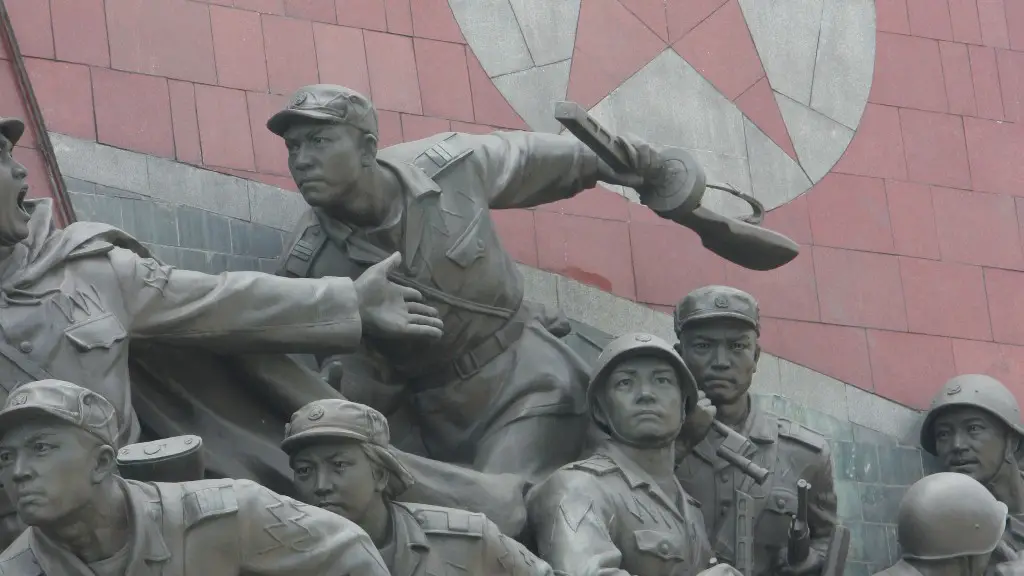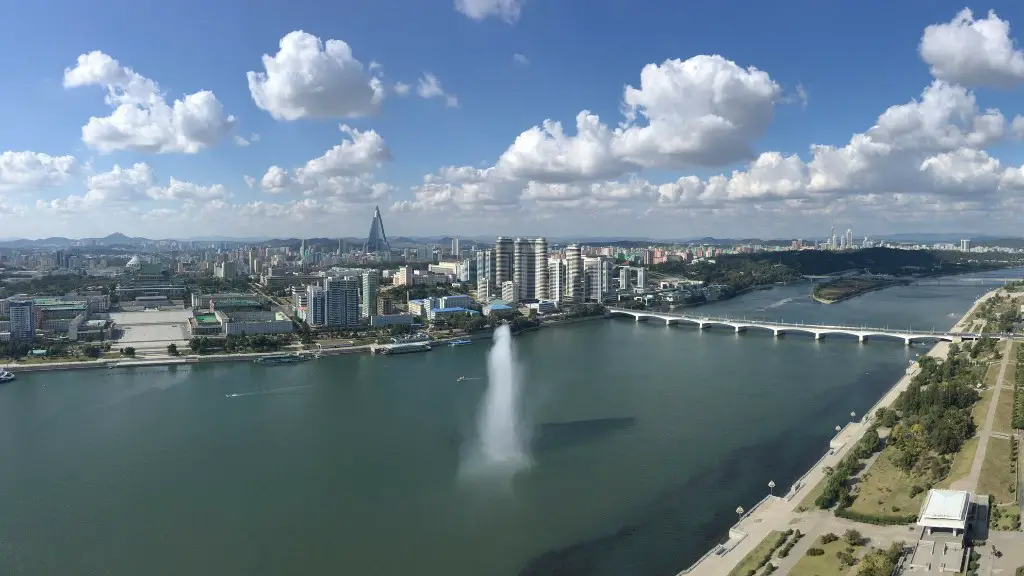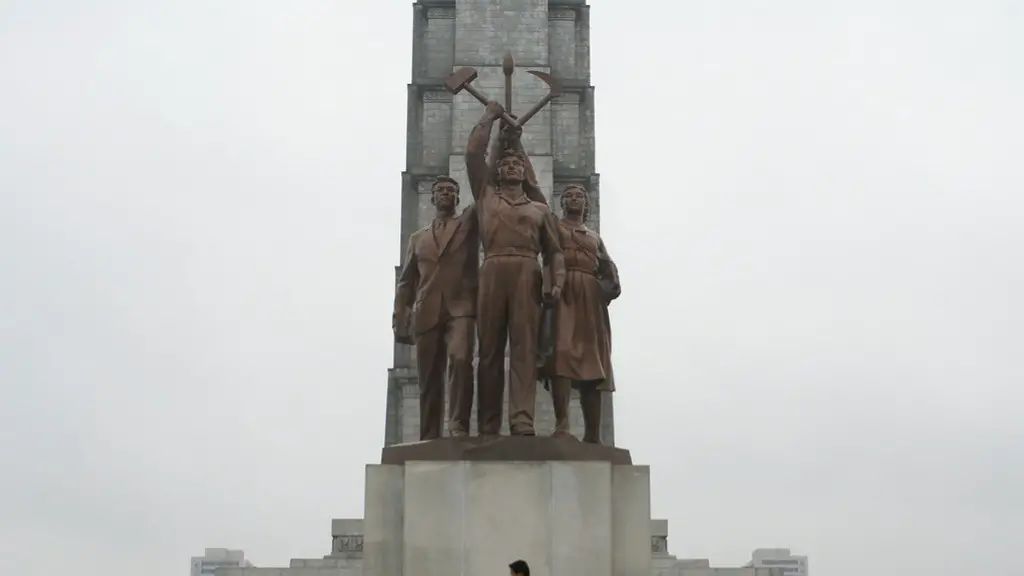The Korean Peninsula was divided in 1945 at the end of World War II. The Soviet Union occupied the northern half of the peninsula and installed a communist regime, while the United States occupied the southern half and installed a democratic regime. This division was meant to be temporary, but the two regimes became increasingly hostile to each other. In 1950, the North Korean regime invaded the South in an attempt to reunify the peninsula under communist rule. This led to the Korean War, which ended in a stalemate in 1953. The two Koreas have been divided ever since.
The roots of the division between North and South Korea can be traced back to the end of World War II in 1945. At that time, the Soviet Union occupied the northern part of the peninsula, while the United States occupied the southern part. The two superpowers were unable to agree on a plan for reunifying the peninsula, and in 1948 they each sponsored the establishment of a separate government in their respective occupation zones. The North Korean regime, founded by Kim Il-sung, was based on a communist ideology, while the South Korean regime, founded by Syngman Rhee, was based on a capitalist ideology. The division of the peninsula became formalized when the two states were admitted to the United Nations in September 1991.
Why did Korea split into North and South?
US policy toward Korea during World War II was aimed at preventing any single power from dominating Korea. The division of Korea was intended to stop the Soviet advance south of the 38th parallel.
There are a few reasons why Korea was divided. Firstly, the Soviet Army and its proxies were setting up a communist regime in the area north of latitude 38˚ N, or the 38th parallel. Secondly, the two allies were not getting along well and were divided on what to do with Korea. Lastly, the Korean Peninsula was a strategic location, and both the Soviet Union and the United States wanted to have a presence there.
Can North Korean go to South Korea
Since the Korean War ended with an armistice in 1953, North and South Korea have been separated by an almost impenetrable border preventing anyone from crossing to the other side. This has resulted in a unique situation where the two countries have been able to develop independently from one another, creating two very different societies.
The Korean conflict has been ongoing for many years, with no end in sight. Both North and South Korea claim to be the legitimate government of all of Korea, and neither side seems willing to back down. This conflict has led to much tension and violence in the region, and it shows no signs of stopping anytime soon.
Why is Korea still divided?
The Korean War was a conflict between North Korea and South Korea that lasted from 1950 to 1953. The war began on June 25, 1950, when North Korea invaded South Korea in an attempt to re-unify the peninsula under its communist rule. The United States, which had been providing military aid to South Korea, intervened on behalf of the South, and the UN Security Council passed a resolution ordering North Korea to withdraw. North Korea refused, and the war continued. The war ended in a stalemate, with an armistice signed on July 27, 1953. The war left Korea divided by the Korean Demilitarized Zone (DMZ), which is still in place today.
The Korean War began on June 25, 1950, when the Northern Korean People’s Army invaded South Korea in a coordinated general attack at several strategic points along the 38th parallel, the line dividing communist North Korea from the non-communist Republic. After five years of simmering tensions on the Korean peninsula, the war was a devastating conflict that left millions dead, wounded, or missing.
What part of Korea did the US support?
The United States supported the Republic of Korea in repelling an invasion from the Democratic People’s Republic of Korea during the Korean War. The war emerged after World War II, when the Empire of Japan had occupied the Korean Peninsula.
The U.S. Department of State advises all Americans not to travel to North Korea due to the risk of arrest and detention. The Department of State also recommends that Americans exercise increased caution when traveling to North Korea.
Why is North Korea dark at night
Since the mid-1990s, North Korea has been without external sources of fuel, and has consequently descended into darkness. The country is famously hermetic, and its people have had to rely on their own resources to keep the lights on.
It is challenging for North Koreans to travel within their own country, let alone travel abroad. Emigration and immigration are both tightly controlled by the government. This means that it can be difficult for North Koreans to visit family members who live in different parts of the country. It can also be difficult for them to access information and education that is available in other parts of the world.
Can you drive from South Korea to North Korea?
The border between South Korea and North Korea is closed to civilians. South Korea and North Korea are divided by the Korean Demilitarized Zone (DMZ), a buffer zone cutting across the peninsula which is 4km in width (2km in each Korea).
It is good to see that the leaders of North and South Korea are finally working towards a treaty to end the Korean War. This has been a long time coming, and it is good to see that progress is being made. Hopefully, this will lead to a lasting peace between the two Koreas.
Why did the US join the Korean War
Truman was worried that if Korea fell, the next country to fall would be Japan, which was very important for American trade. America wanted to not just contain communism, but to prevent the domino effect. In other words, they wanted to stop the spread of communism to other countries.
After WWII, Japan lost all power over Korea. The US and the Soviets divided it along the 38th parallel. Korea was split into North and South Korea when Japan was forced to surrender all of their colonies to the Soviets and the United States after losing WWII.
Which Korea is a dictatorship?
According to Article 1 of the state constitution, North Korea is an “independent socialist state.” It holds elections, though they have been described by independent observers as sham elections, as North Korea is a totalitarian dictatorship with a comprehensive cult of personality around the Kim family.
South Korea is not a member of the NATO alliance, but the country has close ties to the organization and in November opened a diplomatic mission at NATO’s headquarters in Brussels. The move was seen as a way to help South Korea deepen its engagement with the alliance and its members.
Did the US win the Korean War
After three years of fighting, the war ended in a stalemate with the border between North and South Korea near where it had been at the war’s beginning. This was a difficult time for many people, as they had to rebuild their lives and homes. However, it was also a time of hope, as people were able to start anew and create a better future for themselves and their families.
In April 1950, Stalin gave Kim permission to invade the South under the condition that Mao would agree to send reinforcements if needed. Stalin made it clear that Soviet forces would not openly engage in combat, to avoid a direct war with the US. Kim met with Mao in May 1950. They discussed the possibility of Chinese intervention if the US became involved in the conflict.
Final Words
The division of North and South Korea occurred at the end of World War II in 1945. The Soviet Union occupied the northern half of the peninsula, while the United States occupied the southern half. This division was meant to be temporary, but the two countries became increasingly hostile towards each other. In 1950, North Korea invaded South Korea in an attempt to reunify the peninsula. This led to the Korean War, which ended in 1953 with no change in the border between the two countries.
The division of North and South Korea is a result of the Cold War. At the end of World War II, the Soviet Union occupied the north while the United States occupied the south. The two superpowers were unable to agree on a plan to unify the country, so they each installed their own government. This created a divide between the communist north and the democratic south. The division of North and South Korea is a tragic reminder of the human costs of the Cold War.





